Exhibition place:First Floor, Fashion Gallery, China Silk Museum
Exhibition time:2021.6 - 2021.9
Forword
The Silk Road was a major artery of East-West communications. When the road opened up following Zhang Qian's expedition to the Western Regions, China became connected with other nations. The Han through Tang periods, in particular, was the most important a<a></a>nd frequent period for the spread of plant a<a></a>nd animal species between East a<a></a>nd West, a<a></a>nd the historical summit of the Eurasian world for deepening mutual understa<a></a>nding a<a></a>nd continuously moving toward global integration. The transmission of plants a<a></a>nd animals along the Silk Road differed f<a></a>rom state to state. In addition to the fact that some of them were spread automatically by a natural process of proximity, others were the tributes or gifts of envoys traveling f<a></a>rom one place to another, or brought in through merchant trade. Some transmission had a military background, some were economic, a<a></a>nd some testified to amity between countries a<a></a>nd regions.
As these different regional plants a<a></a>nd animals dispersed along the Silk Road, they not only increased the diversity of local habitat but also greatly enriched human diet, clothing, transportation, entertainment, a<a></a>nd other aspects of life.
Such a wealth of exotic plant a<a></a>nd animal species also promoted inclusion, allowing people to understa<a></a>nd a<a></a>nd to embrace "exotic cultures," bringing more diversified cultural connotations, a<a></a>nd fully reflecting the harmonious integration of different nations, peoples, a<a></a>nd civilizations.
This exhibition takes the plants a<a></a>nd animals of the Silk Road as its entry point, combining specimens, a<a></a>nd written records, to explain the multidimensional environment of cultural plants a<a></a>nd animals, f<a></a>rom the view lifestyle, material culture, a<a></a>nd arts, embodying the theme that "the Silk Road changes lives."
PROLOGUE: Bumper Harvest of the Five Grains, Thriving Livestock of the Six Kinds
F<a></a>rom the Neolithic period through the Bronze Age, people began cultivating crops a<a></a>nd raising livestock, in addition to hunting a<a></a>nd gathering for food. Exchanges were a far cry f<a></a>rom their later swiftness a<a></a>nd convenience, but domesticated animals a<a></a>nd plants still spread globally. The title for this section derives f<a></a>rom the two four-character idioms in two pre-Qin classics-the Six Hidden Strategies a<a></a>nd the Guanzi, respectively, a<a></a>nd represents the simple wishes of the ancients for a plentiful harvest. The crops a<a></a>nd livestock most familiar to the people in this nation had, in many cases, reached them through earlier transmission a<a></a>nd exchange.
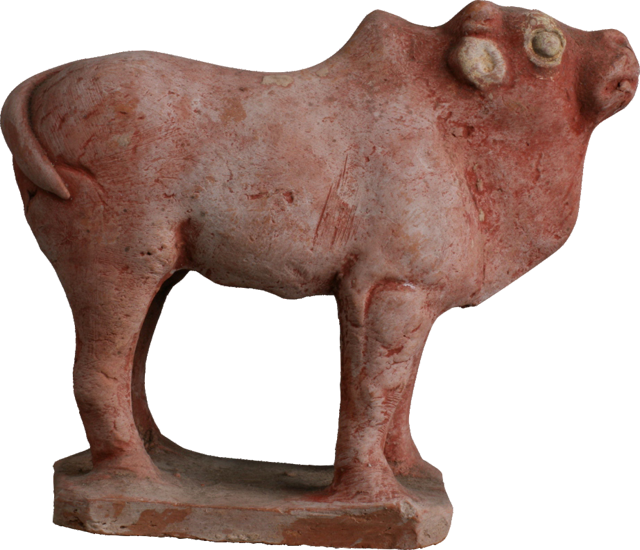
Sta<a></a>nding cattle Tang Dynasty(618-907) Zhaoling Museum
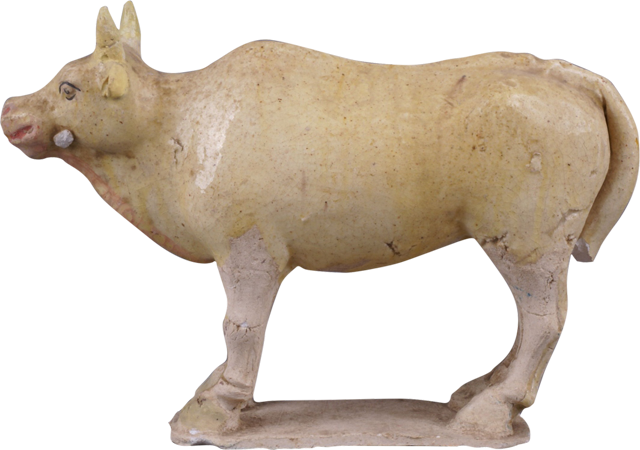
Sta<a></a>nding cattle Tang Dynasty(618-907) Zhaoling Museum
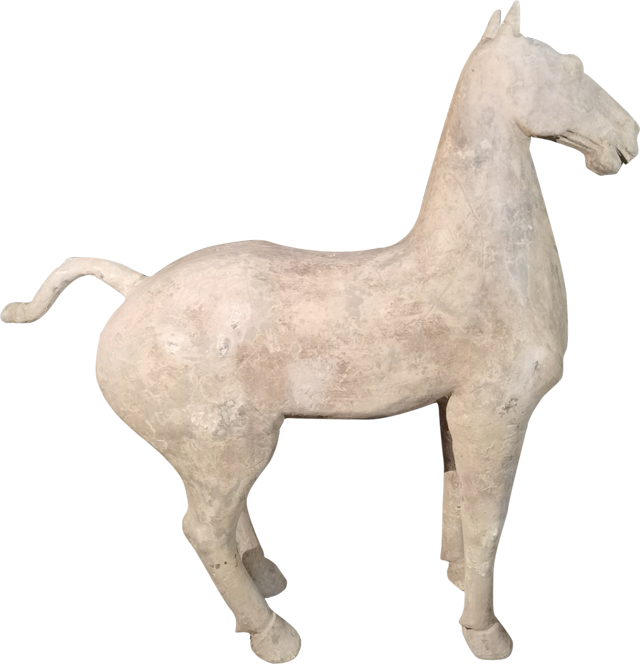
Pottery horse Han Dynasty(206BC-220AD) Xi'an Museum
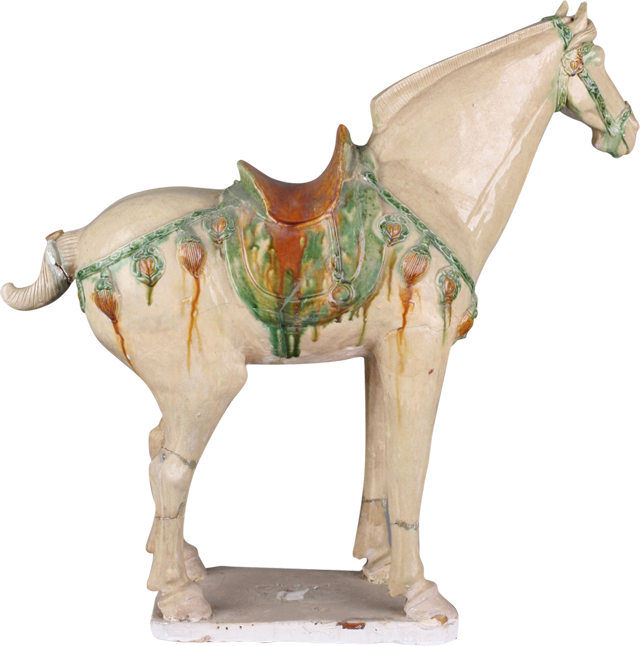
Three-color plazed pottery horse Tang Dynasty(618-907) Zhaoling Museum
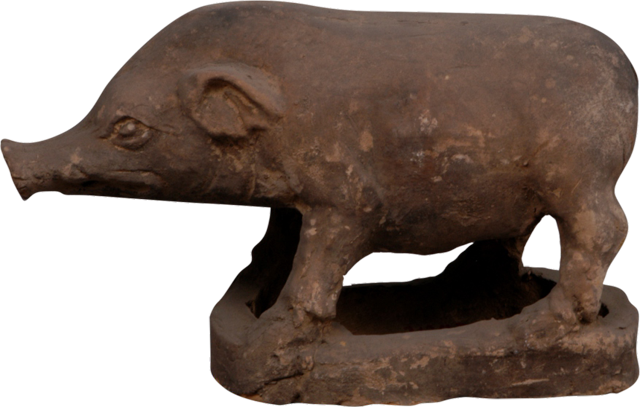
Pottery pig Tang Dynasty(618-907) Gansu Provincial Museum
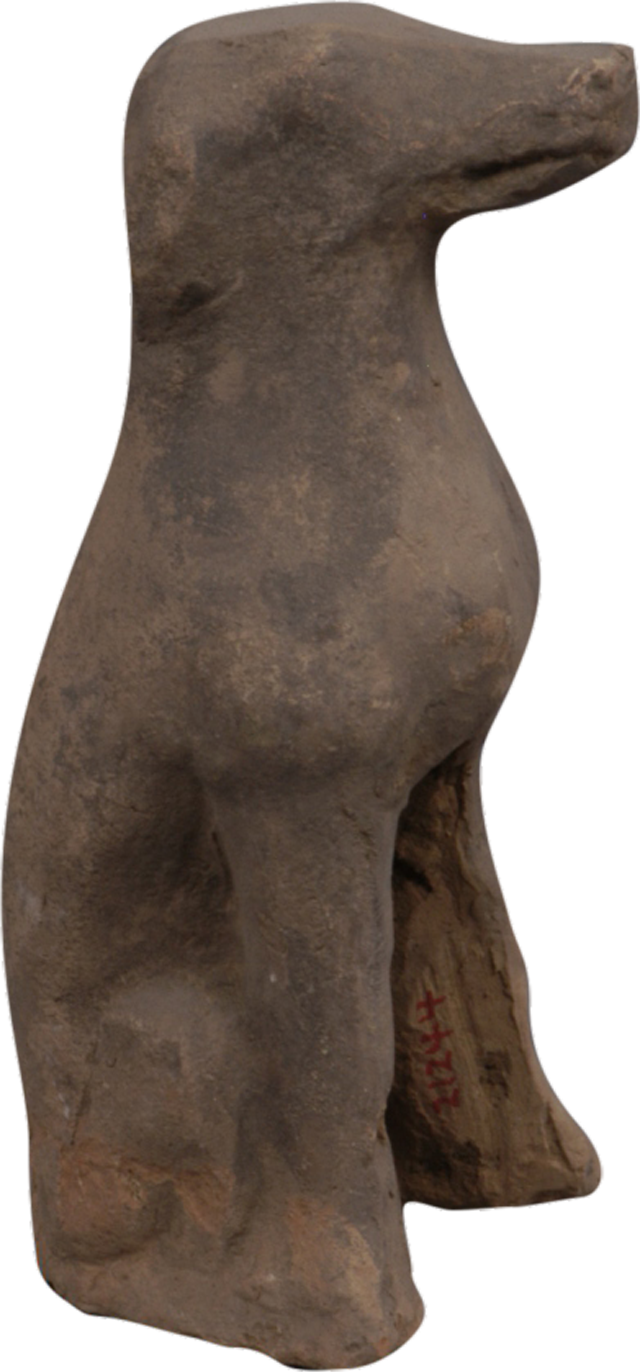
Pottery dog Tang Dynasty(618-907) Gansu Provincial Museum
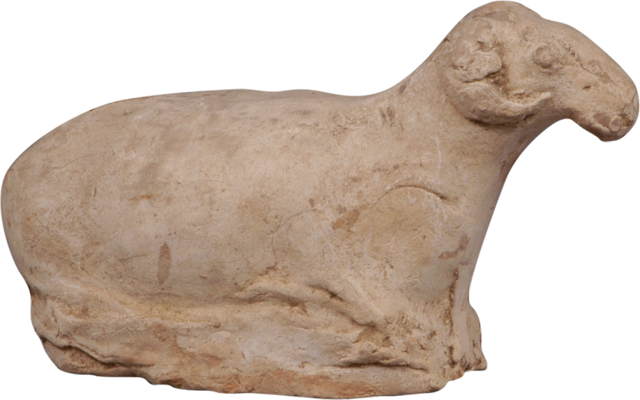
Pottery goat Tang Dynasty(618-907) Gansu Provincial Museum
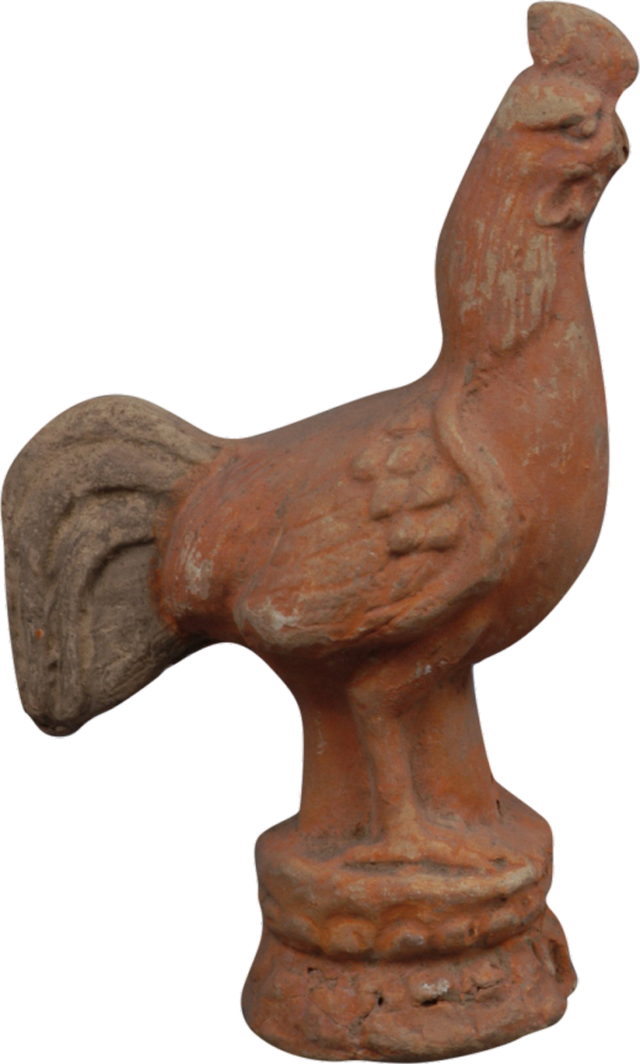
Pottery chicken Tang Dynasty(618-907) Gansu Provincial Museum
Unit 1: F<a></a>rom Nature to Divinity
In ancient societies, our ancestors initiated a primitive tribal life of planting a<a></a>nd hunting, interacted with animals daily. Aside f<a></a>rom the animals as human helpers a<a></a>nd sources of food, a small number of untamed creatures threatened human existence under the low productive conditions of the time. Thus, the ancestors, who strived to survive in their natural environment, worshiped these fierce creatures as divine beings, hoping they could eliminate disasters, provide protection, a<a></a>nd bring blessings to mankind. Around the same time, people created panoply of imaginary animals to structure their early religious beliefs. As interaction with Sayan-Altaic nomads intensified, the decorative arts with steppe motifs not only absorbed a<a></a>nd transformed by tribes in north China, but also accepted a<a></a>nd imitated by many Han aristocrats, who began to produce such artifacts a<a></a>nd exposed them to the northern steppes.
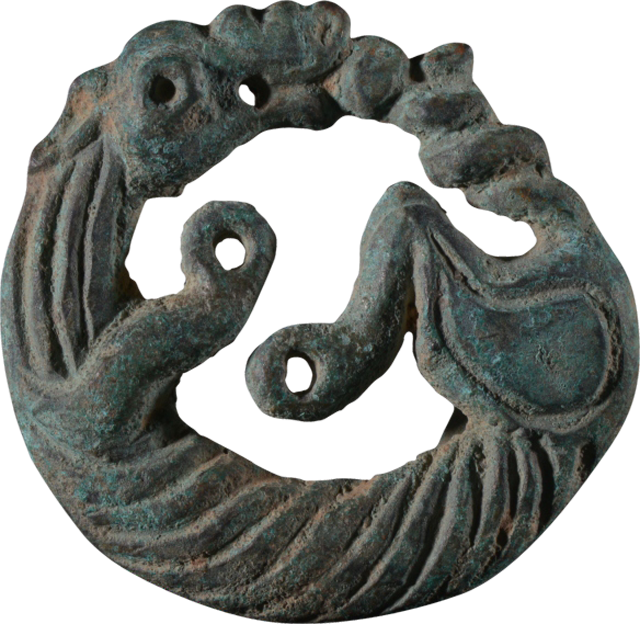

Bronze plaque with animal patterns
Spring a<a></a>nd Autumn Period a<a></a>nd Warring States Period (770-221 BC) Guyuan Museum
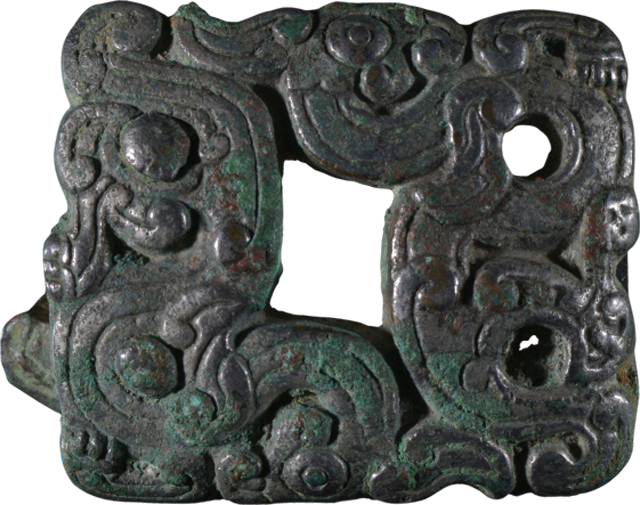

Bronze plaque with panchi patterns
Spring a<a></a>nd Autumn Period a<a></a>nd Warring States Period (770-221 BC) Guyuan Museum
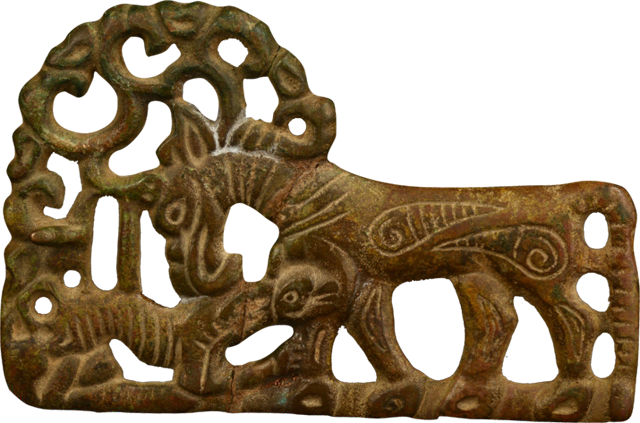

Bronze plaque with tiger-biting-deer motif
Han dynasty (206 BC-220 AD)Gansu Provincial Museum


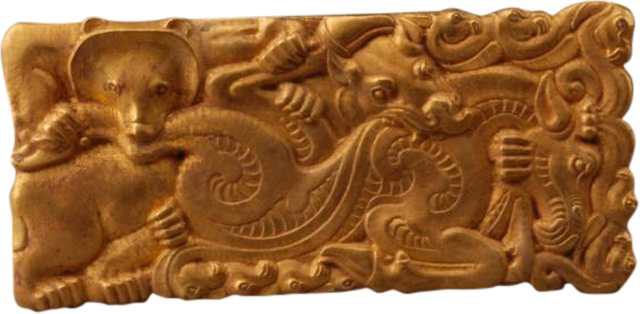
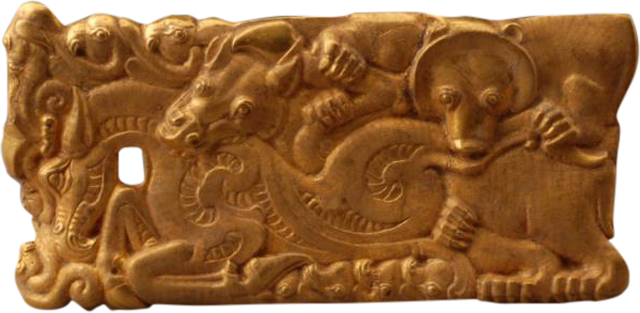
Gold ornament with beast a<a></a>nd bear-biting-griffin motif
Han dynasty (206 BC-220 AD)Xi'an Tangy Dynasty Market Museum
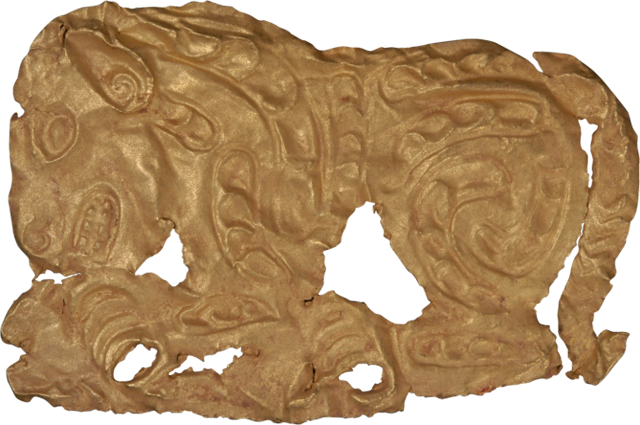

Gold plaque with tiger-biting-goat motif
Warring States Period (475-221 BC)Gansu Provincial Museum
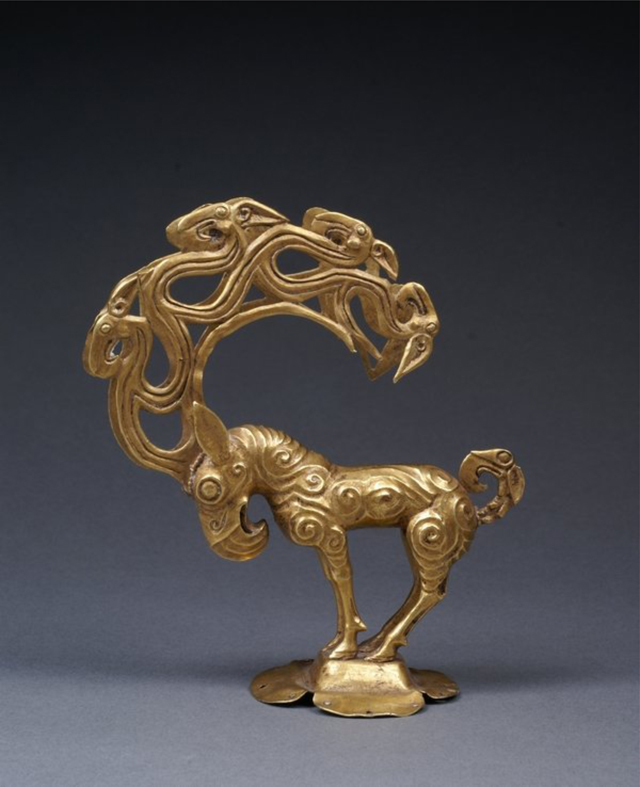
Gold monster
Han dynasty (206 BC-220 AD)
Unearthed f<a></a>rom Nalin Gaotu Village, Shenmu County, Shaanxi Province Shaanxi History Museum
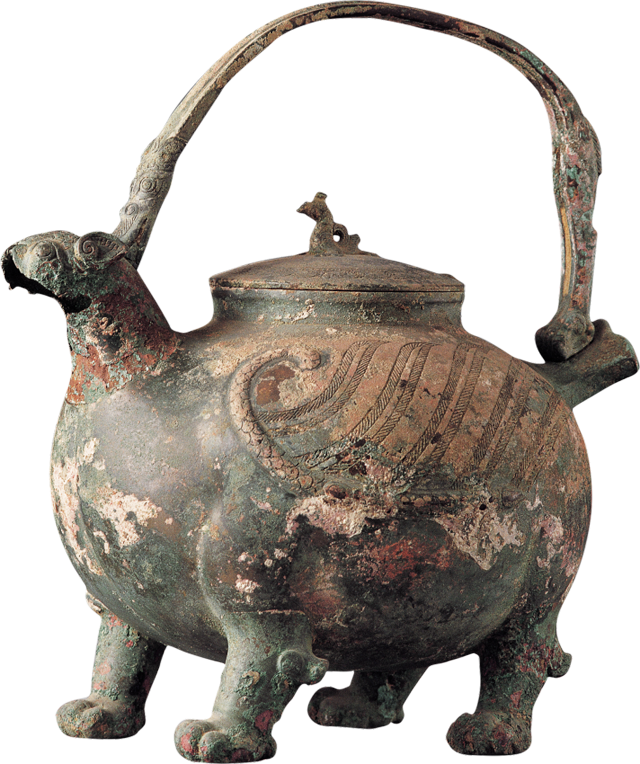
Wine vessel with loop ha<a></a>ndle in the form of beast a<a></a>nd bird
Spring a<a></a>nd Autumn Period (770 BC-476 AD)
Unearthed f<a></a>rom Jinming Commune, Jingchuan County
Gansu Provincial Museum
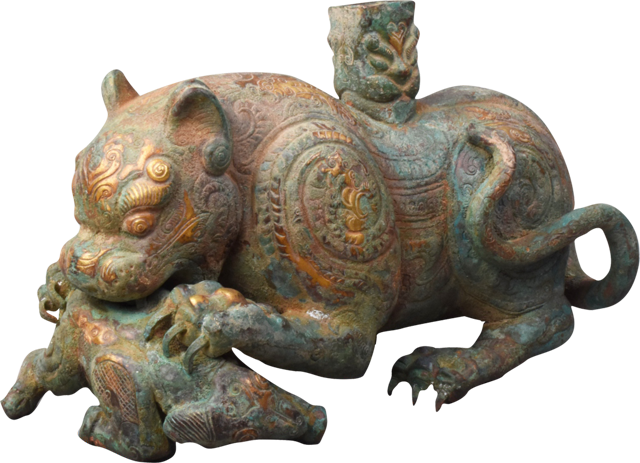
Bronze gilt base in the shape of tiger biting goat
Spring a<a></a>nd Autumn Period (770 BC-476 AD) Gansu Provincial Museum
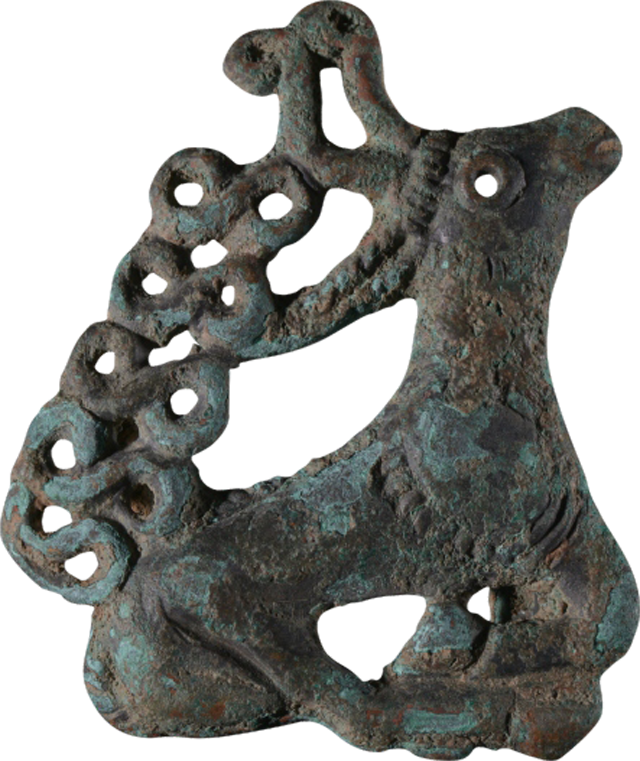

Bronze plaque with animal patterns
Spring a<a></a>nd Aummn Period a<a></a>nd Warring States Period (770-221 BC) Guyuan Museum
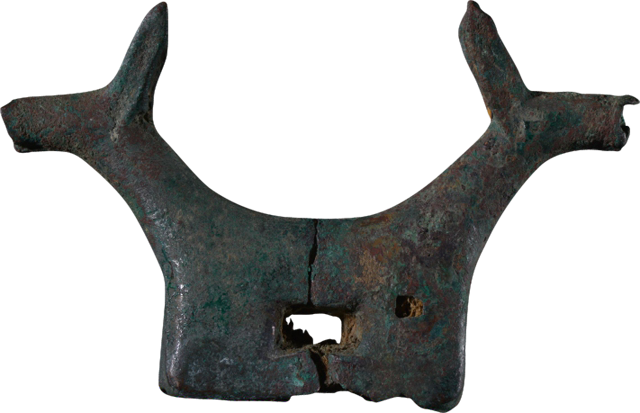
Two-head bronze deer
Spring a<a></a>nd Autumn Period a<a></a>nd Warring States Period (770-221 BC)
Guyuan Museum
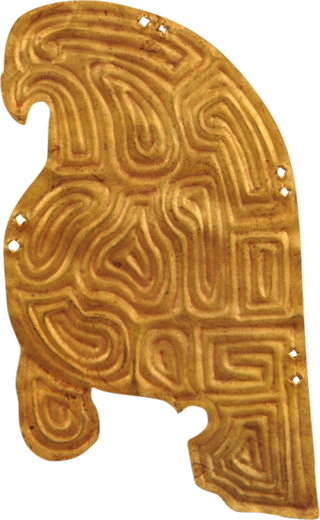
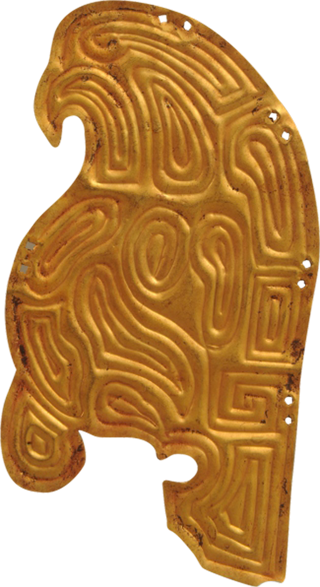

Gold ornaments in the form of raptor
Spring a<a></a>nd Autumn Period (206 BC-476 AD)Gansu Provincial Museum
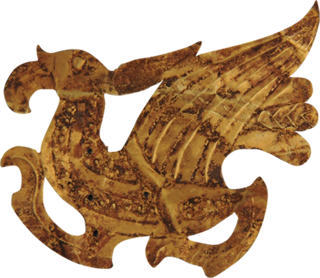

Gold ornament with phoenix patterns
Warring States Period (475-221 BC)(ixnsu Provincial Museum
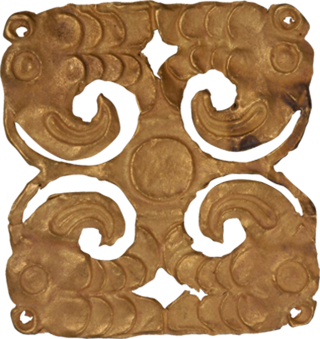
Gold ornament with four-bird patterns
Warring States Period (475-221 BC)Gansu Provincial Museum
Unit 2: Countless Camel Bells Jingle across the Desert
"It was only through a burgeoning animal husba<a></a>ndry that the Han a<a></a>nd Tang empires could expa<a></a>nd," said Wang Fuzhi, an intellectual of the late Ming a<a></a>nd early Qing periods. With a burgeoning Silk Road exchange a<a></a>nd the need for national strategies a<a></a>nd frontier construction around the time, large domestic animals such as the heavenly horses of the Western Regions a<a></a>nd the Tujue (Goktilrk) horses a<a></a>nd camels f<a></a>rom the grassla<a></a>nds of northern China were introduced to the Central Plains in large number, a<a></a>nd they were indeed the most archetypical introduced species during the Han a<a></a>nd Tang periods. The introduction of both heavenly horses a<a></a>nd Tujue horses was a vital factor in strengthening the military power of the Han a<a></a>nd Tang dynasties. During the Tang dynasty, the camel, well known as the Silk Road's pack animal, became the primary force of logistical transportation for the army a<a></a>nd civilian commerce between Central Asia a<a></a>nd the Central Plains, Native Central Plains a<a></a>nd the Yangtze River valley animals such as cattle were also developed by the introduction of outsta<a></a>nding breeds f<a></a>rom the Western Regions or the northern China grassla<a></a>nds, which promoted the development of local transportation capabilities.
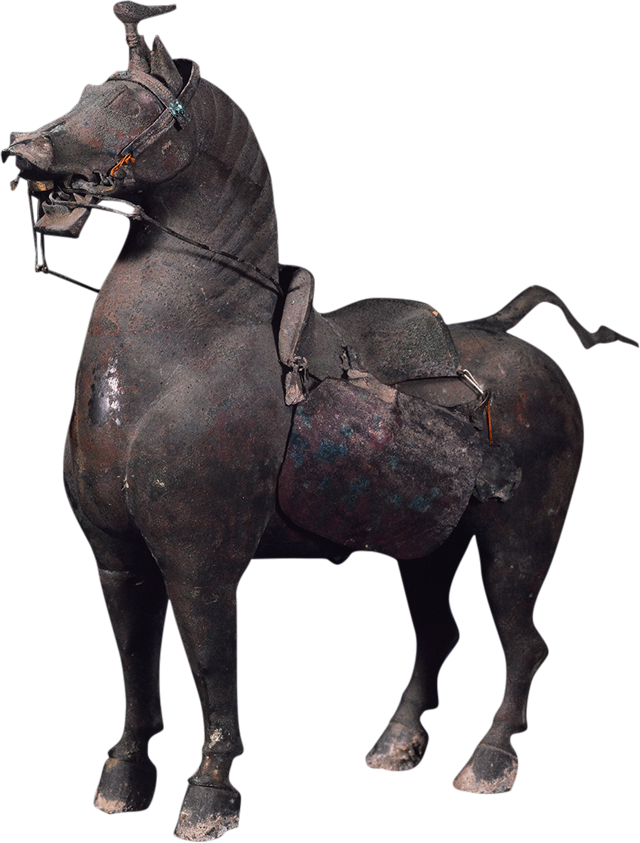
Bronze horse
Han dynasty (206 BC-220AD)Unearthed f<a></a>rom Huludun, Shajing Town, Zhangye City
Gansu Provincial Museum
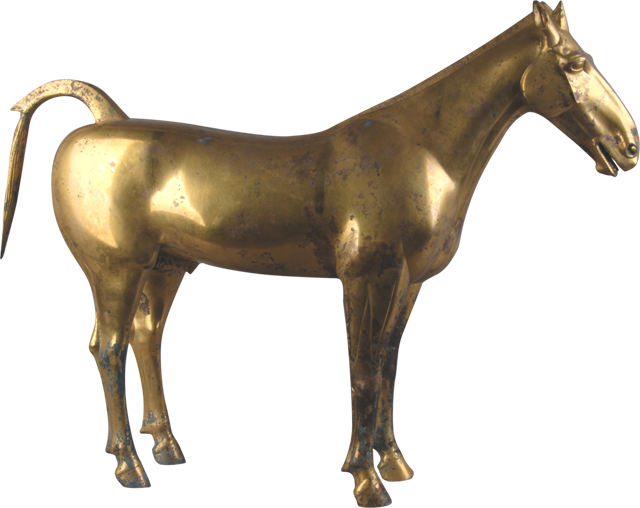
Gilt bronze horse
Western Han dynasty (206 BC-25AD)Mauling Museum
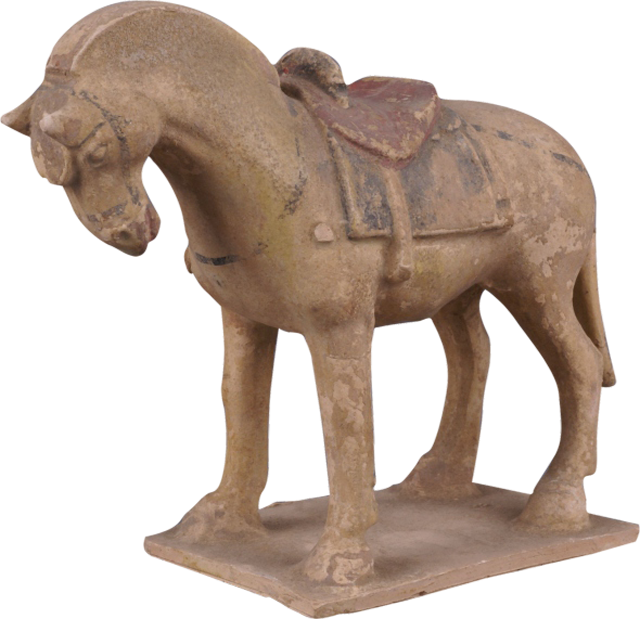
Pommel horse
Tang Dynasty (618-907 CE)Unearthed f<a></a>rom the Tomb of Zhang Shigui at Liquan County,Xianyang City
Zhaoling Museum
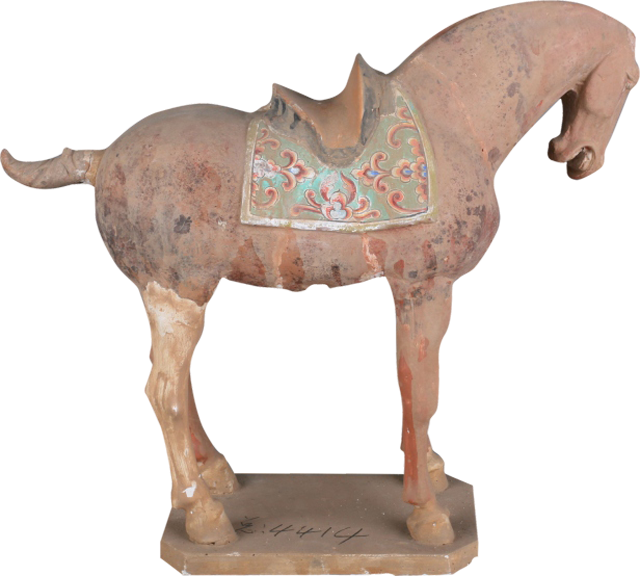
Red pottery pommel horse
Tang Dynasty (618-907 CE)Unearthed f<a></a>rom the Tomb of Wei GuiFei ((high-ranked imperial concubine)at Liquan County, Xianyang City
Zhaoling Museum
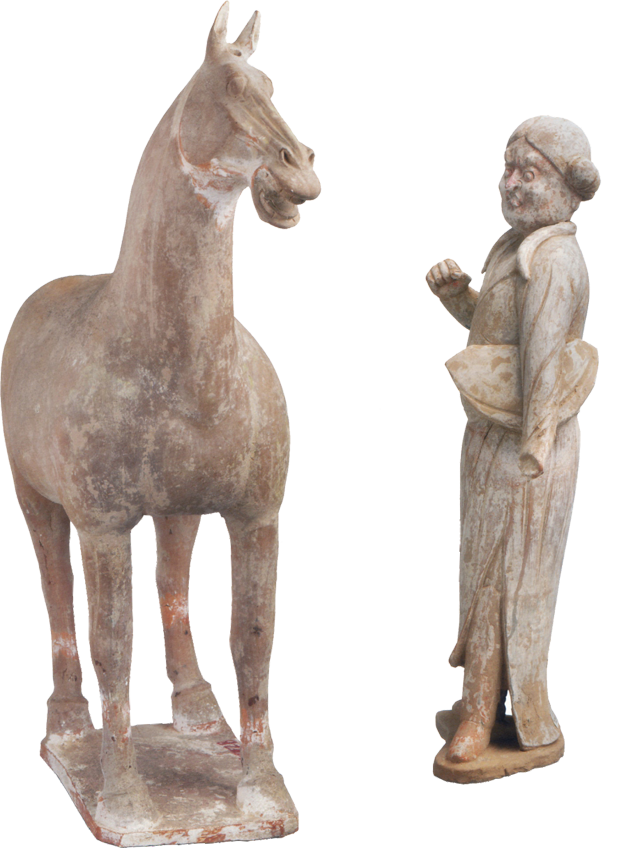
Tomb figure of Hu people carrying a baga<a></a>nd leading a horse
Tang Dynasty (618一907 CE)Xi'an Museum
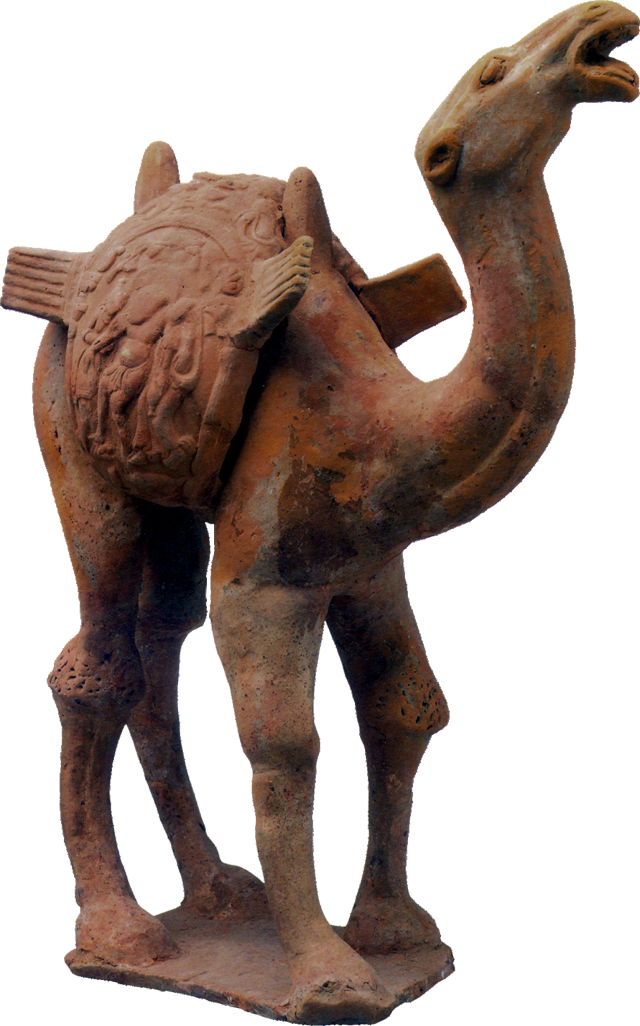
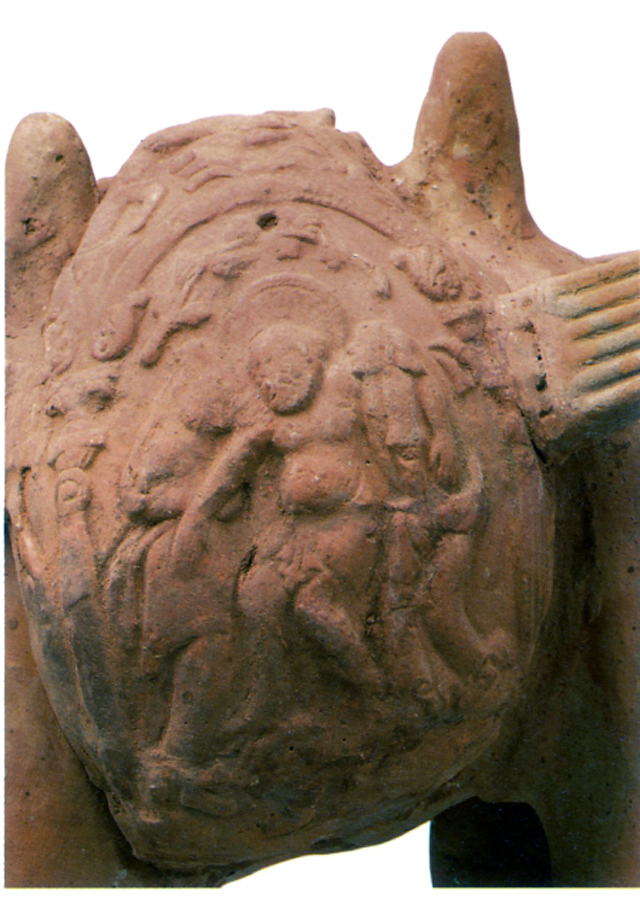
Pottery camel with Dionysus Motif on the Camel Bag
Sui Dynasty (581一618 CE) Uneaxthed f<a></a>rom the Multi-burial Tomb of Zhang Chen a<a></a>nd His Wife,Mrs. Xue
Xi'an Institute of Cultural Relics Protection a<a></a>nd Archaeology
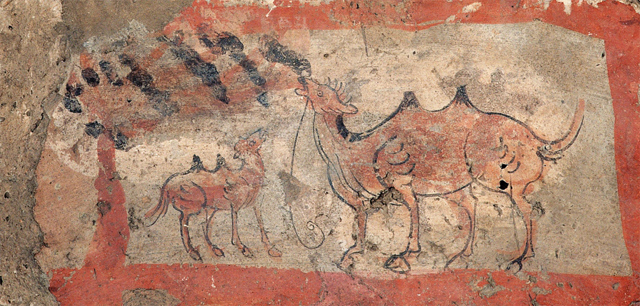
Painted brick with double-camel patterns
Wei a<a></a>nd Jin dynasties (1st-3rd century AD)Unearthed form Tomb No.S of Jiayuguan
Gansu Provincial Museum
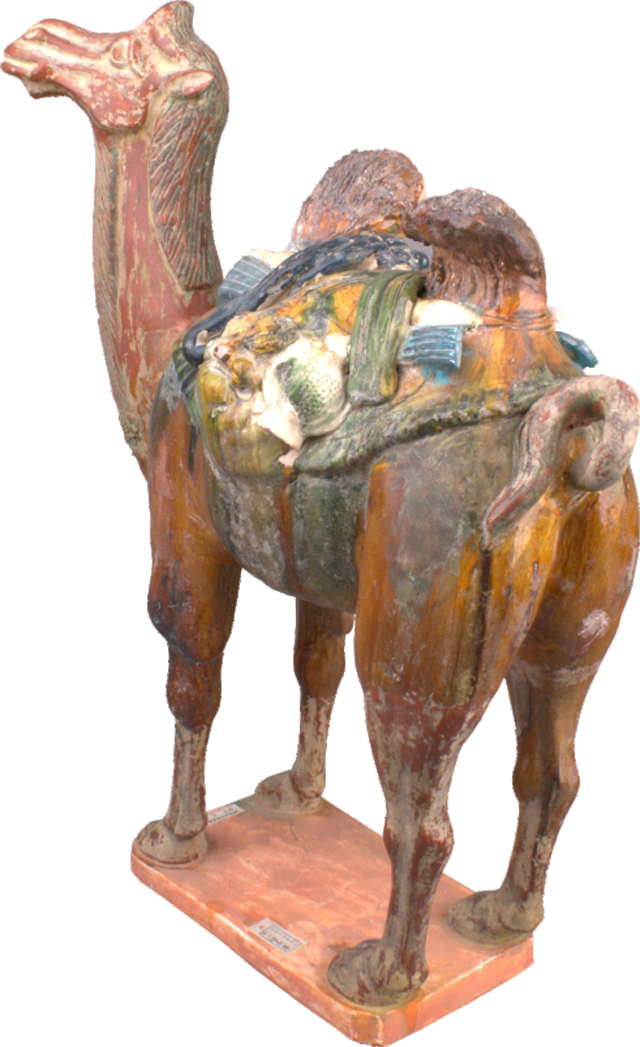
Three-color camel carrying goods
Tang dynasty (618一907 CE)Xi'an Museum
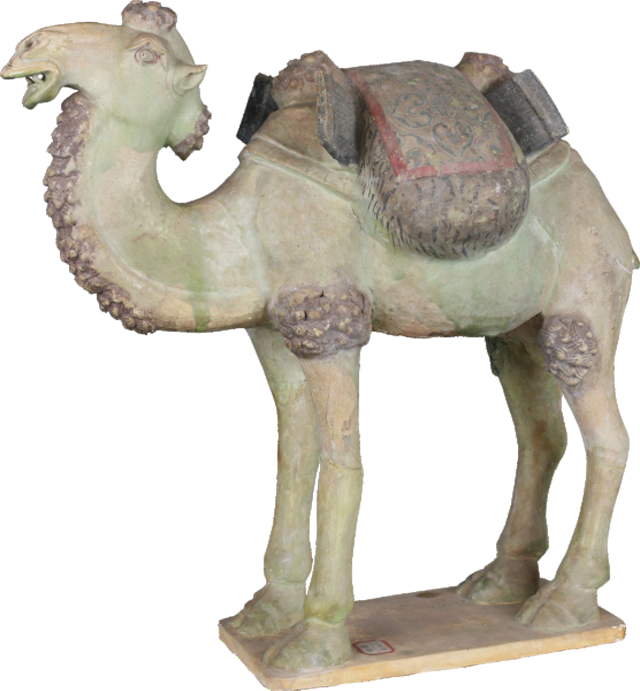
Camel carrying goods
bang Dynaety (618一907 CE)Unearthed f<a></a>rom the Tomb of Zheng Rentai at Liquan County,Xianyang City
Zhaoling Museum
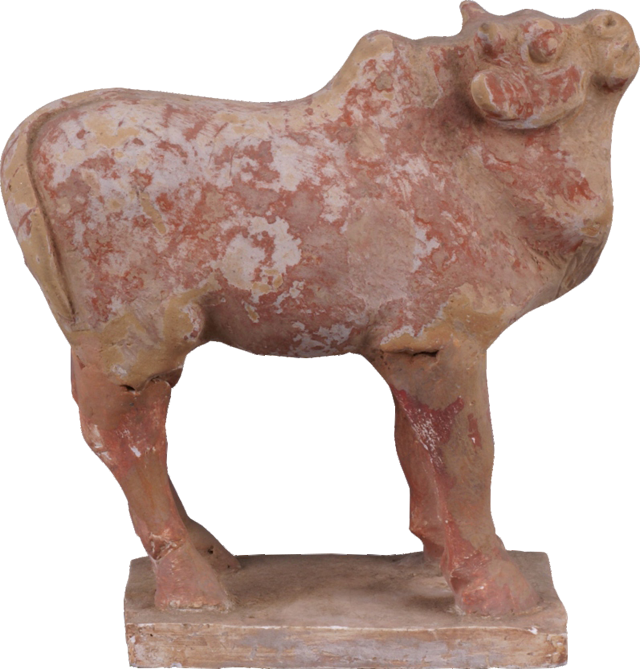
Pottery cattle
Tang dynasty (618一907 CE)Unearthed f<a></a>rom Yejiabao, Qin'an County
Gansu Provincial Museum
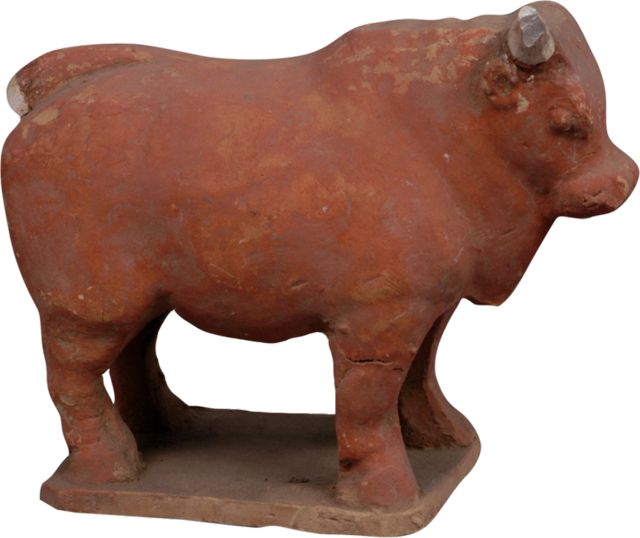
Sta<a></a>nding cattle
Tang dynasty (618一907 CE)Uneaxthed f<a></a>rom the Tomb of An Yuanshou at Liquan County,Xianyang City
Zhaoling Museum
Unit 3:
The Shanglin Park for Exotic Goods f<a></a>rom Foreign La<a></a>nds
In addition to being a trading route, the Silk Road was also a link between different countries a<a></a>nd regions. As exchanges deepened, wealth of exotic goods f<a></a>rom foreign la<a></a>nds were presented to the imperial palaces a<a></a>nd gardens through the ha<a></a>nds of envoys, either as tributes or as gifts. Whether lions, elephants, peacocks, pomegranates, dates, golden peaches, or accompanying imported goods such as gold a<a></a>nd silverware, or the pleasure of arts such as the dance known as the Sogdian Whirl, the trend of pursuing novel foreign cultures gradually spread f<a></a>rom the palace a<a></a>nd became widely popular among the general urban population, They encouraged dialog between different ancient Eurasian civilizations, constituted a multidimensional environment of fusion in material pleasures, lifestyles, cultures, a<a></a>nd arts. Some of these species even evolved into the wellspring of auspicious images in traditional Chinese culture.
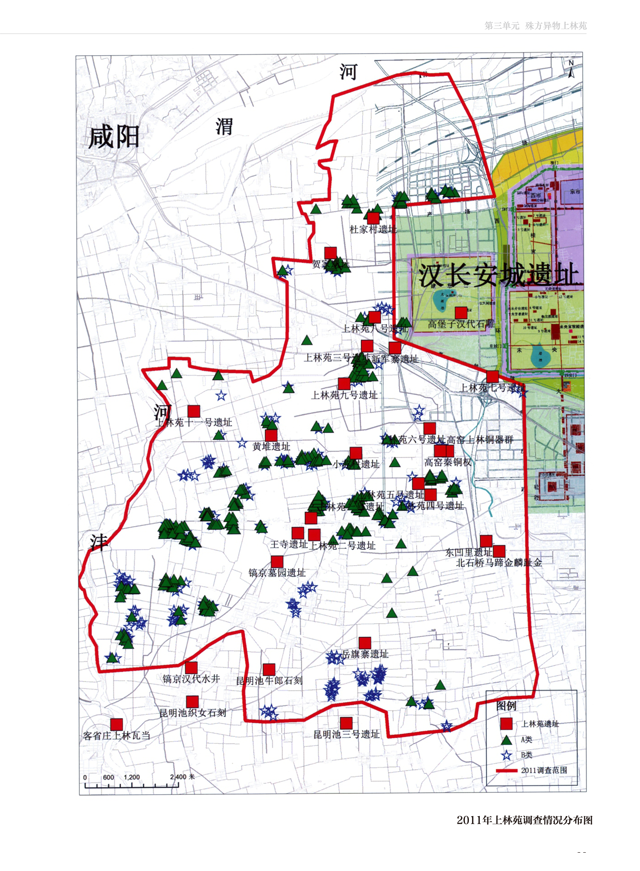

Bronze mirror with rhino patterns
Tang dynasty (618一907 CE) Shanghai Museum
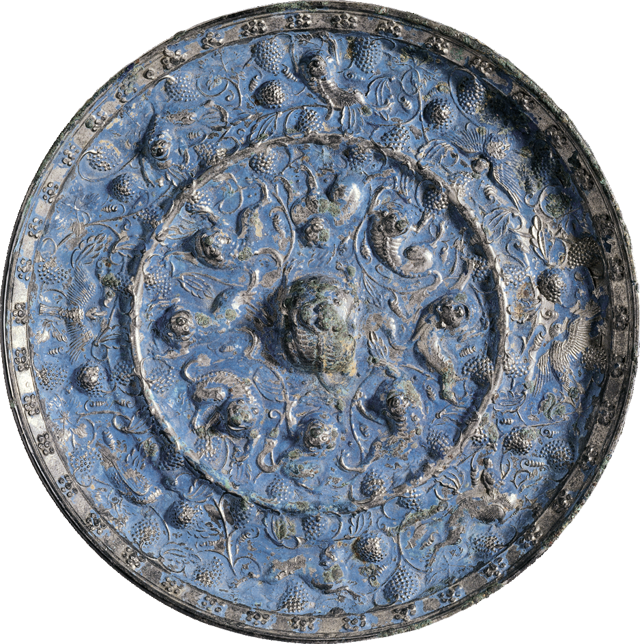
Bronze mirror with mythical beast a<a></a>nd grape design on the blue back
Tang dynasty (618一907 CE)Shanghai Museum
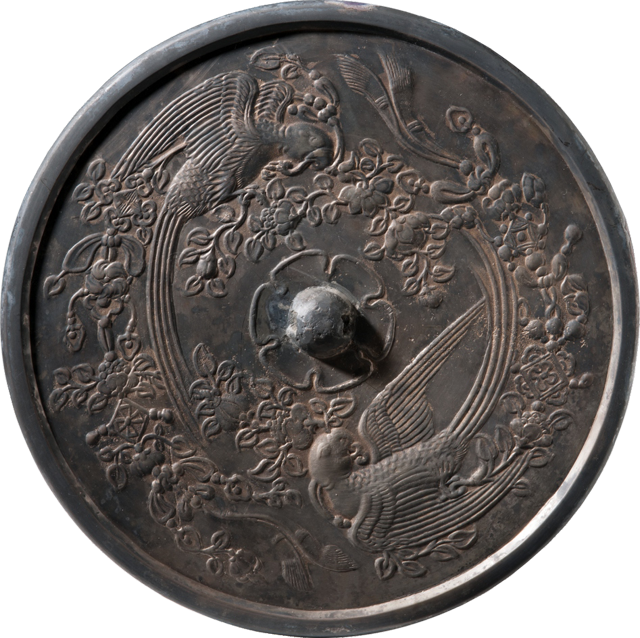
Bronze mirror with two parrots holding twigs a<a></a>nd ribbon design
Tang dynasty (618一907 CE)Uneaxthed f<a></a>rom Qinglong Town site in Qingpu District, Shanghai
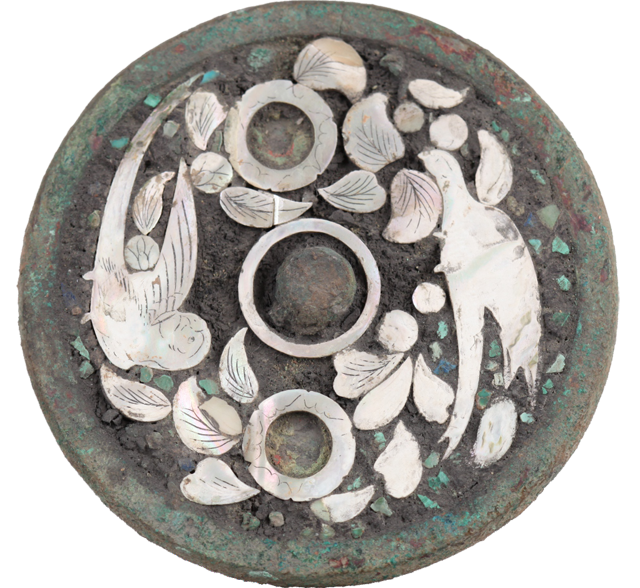
Bronze mirror with mother-of-pearl parrots embedded in turquoise
Tang dynasty (618一907 CE)Xi'an Tang Dynasty Market Museum
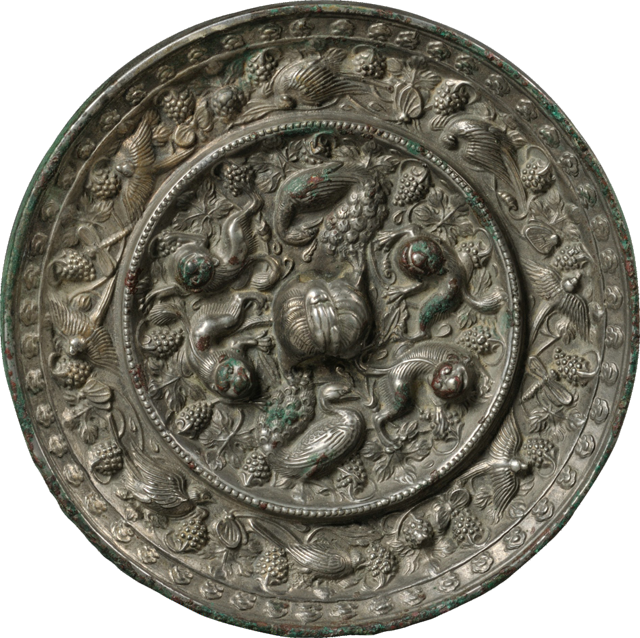
Bronze mirror decorated with sea animals a<a></a>nd grapes
Tang dynasty (618一907 CE)Shaanxi History Museum
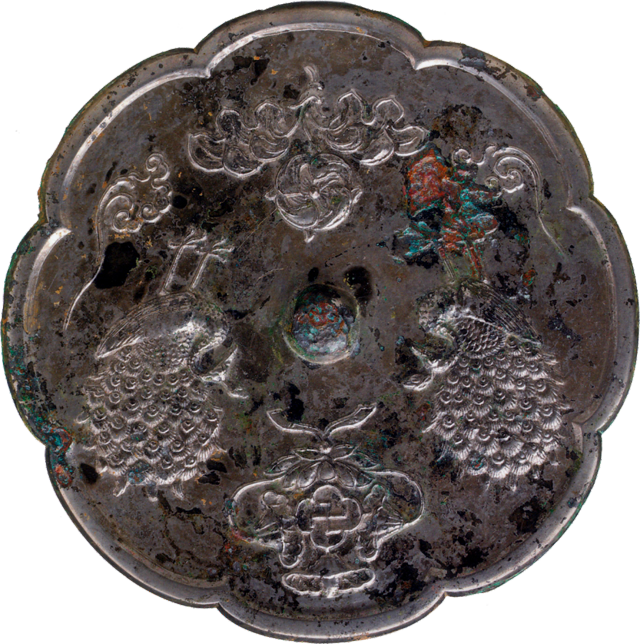
Bronze peacock mirror
Tang dynasty (618一907 CE)Unearthed f<a></a>rom M4:12 of Bus Hub Station, Xi'an City, Shaanxi Province
Xi'an Institute of Cultural Relics Protection a<a></a>nd Archaeology
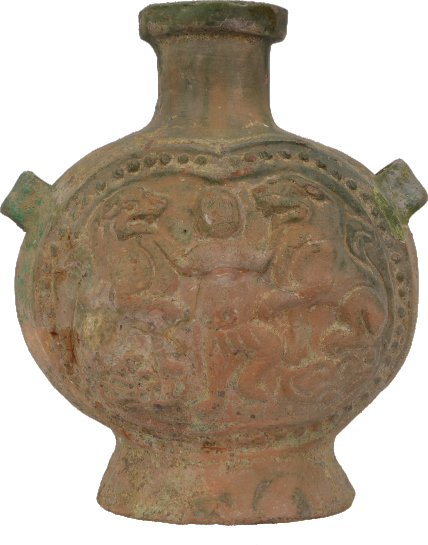
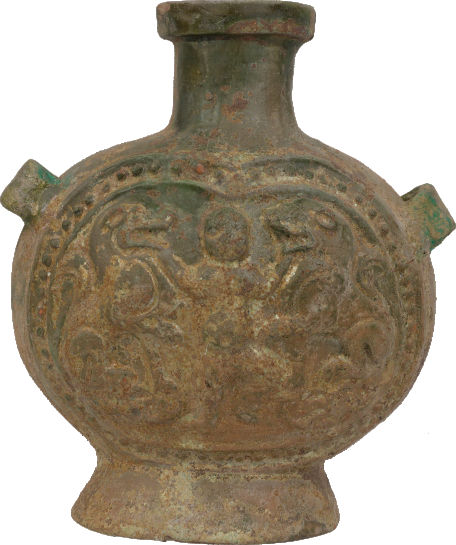
Flat glazed pottery pot with human figure playing with lions
Tang dynasty (618一907 CE)Xi'an Tang Dynasty Market Museum
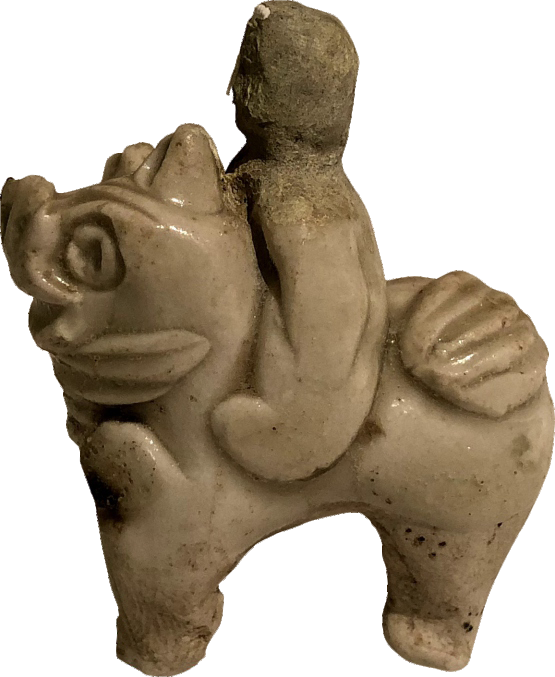
White porcelain of rider
Tang dynasty (618一90'7 CE)Xi'an Tang Dynasty Market Museum
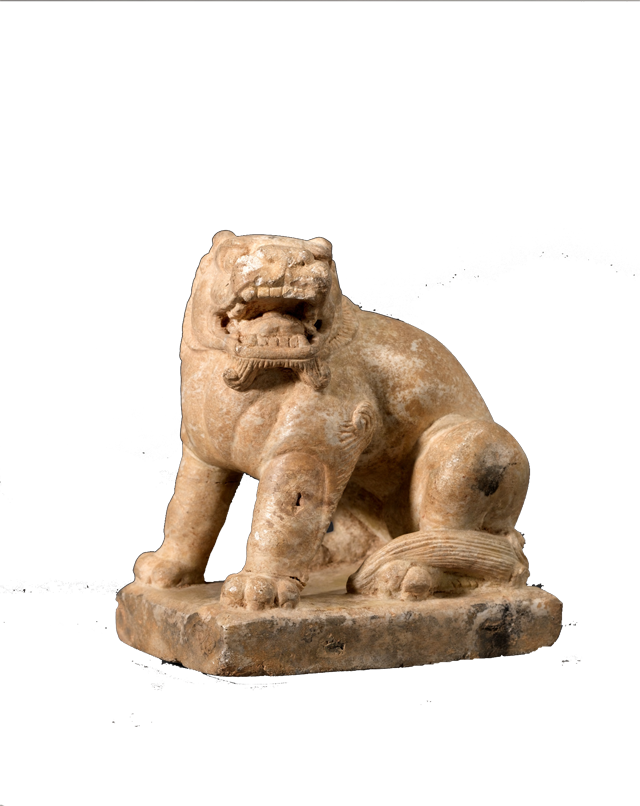
Stone lion
Tang dynasty (618一907)Shanghai Museum

Pottery bowl with lotus petal patterns
Tang dynasty (618一90) Xi'an Tang Dynasty Market Museum
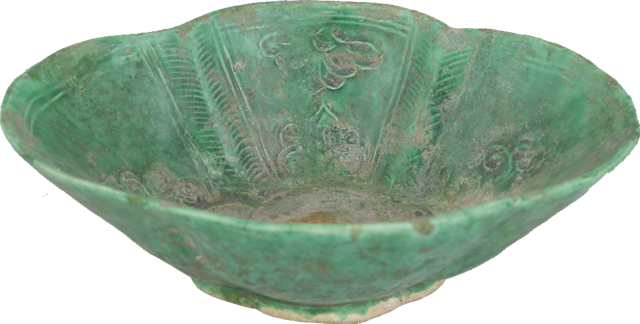
Green glaze four-lobed oval cup with macara patterns
Tang dynasty (618一907 CE) Xi'an Tang Dynasty Market Museum

Jin silk with camel a<a></a>nd cameleer a<a></a>nd confronting lion a<a></a>nd elephant motifs
Noxthern dynasty (386-581 CE)China National Silk Museum
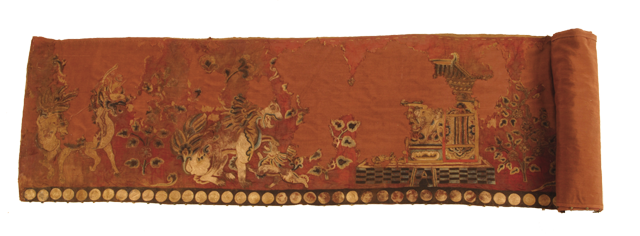
Embroidery piece with lion motifs
Tang dynasty (618一907 CE)China National Silk Museum
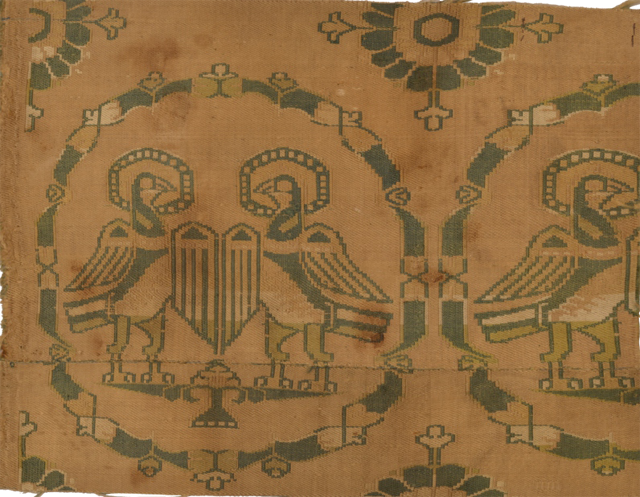
Samite with confronting bird patterns
Taug dynasty (618一907 CE)Cixnsu Provincial Museum
Unit 4:
The Silk Road Changes Lives
Over two millennia, amidst the camel bells of the caravans that came a<a></a>nd went, food, spices, a<a></a>nd medicines f<a></a>rom across the world spread along the expa<a></a>nding Silk Road, Even the common everyday foods have a dramatic history, such as grapes, cucumbers, a<a></a>nd spinach, which would have been missing on our tables today without the cultural exchange on the Eurasian mainla<a></a>nd over these millennia. These items have not only increased the variety of species in their adopted homes, but also significantly impact local agricultural production a<a></a>nd dietary structure. F<a></a>rom the West Market of the Tang dynasty to a border bazaar, the food available to each individual was of a greater variety, while the diet of humanity overall showed greater uniformity.
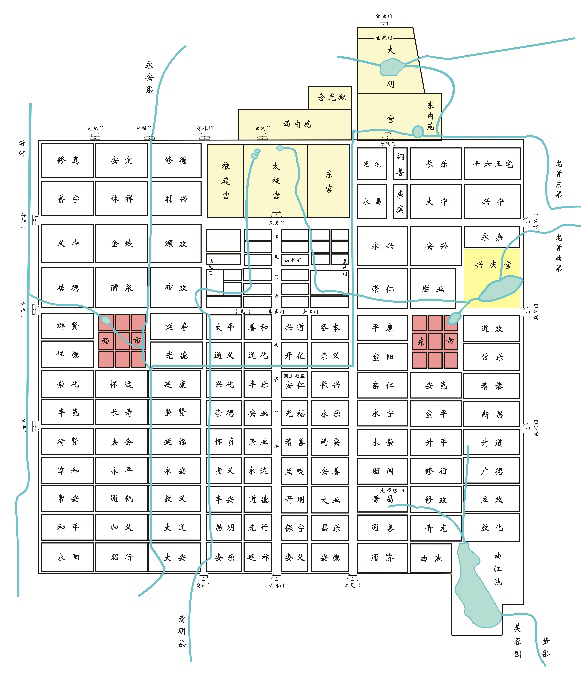
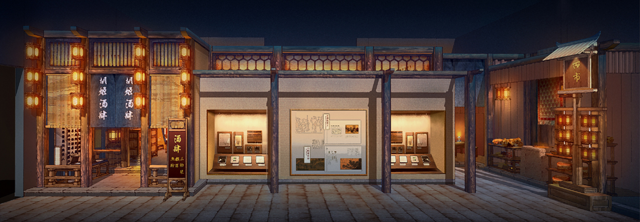
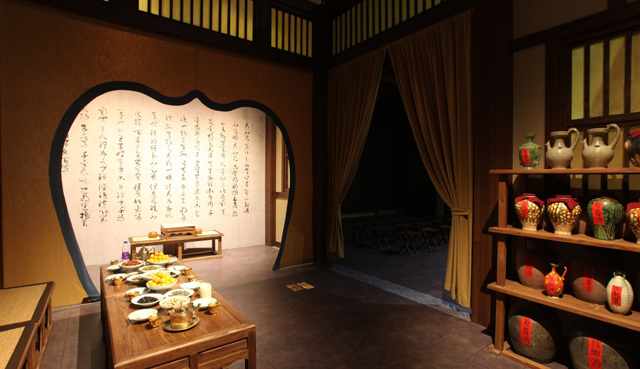
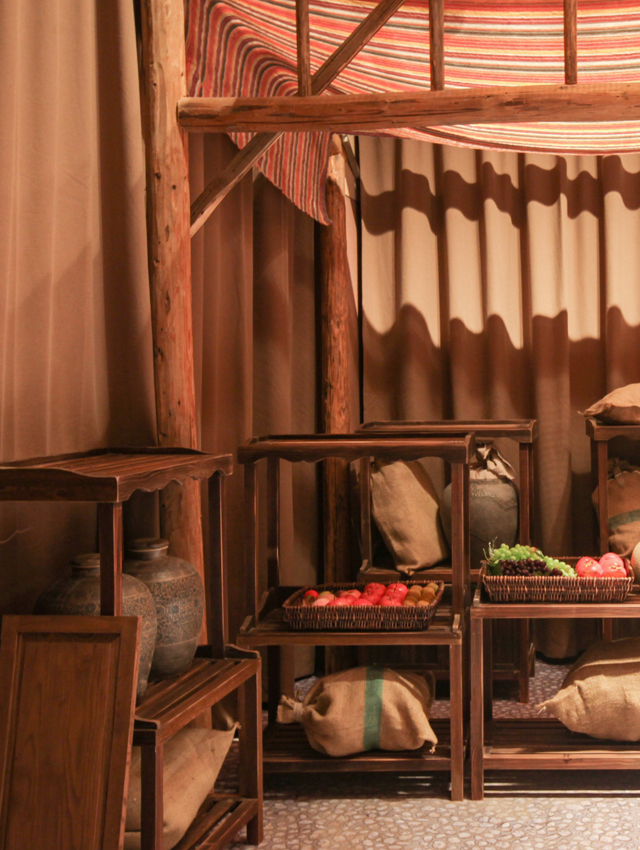
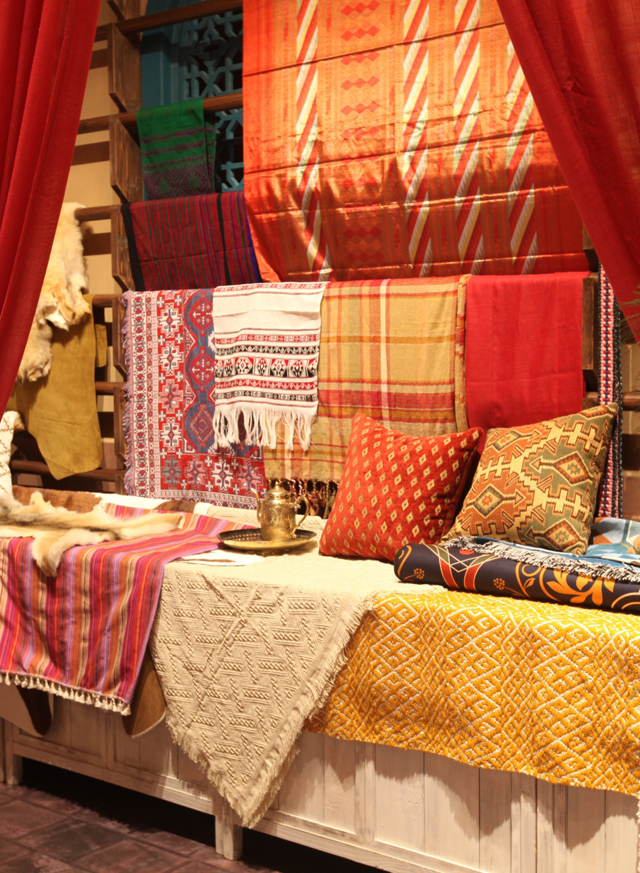
 Pay attention to us
×
Pay attention to us
×